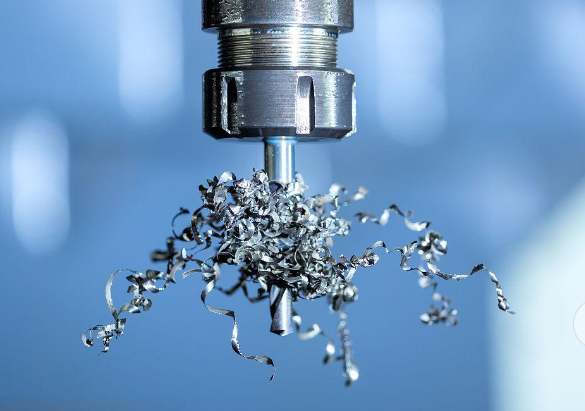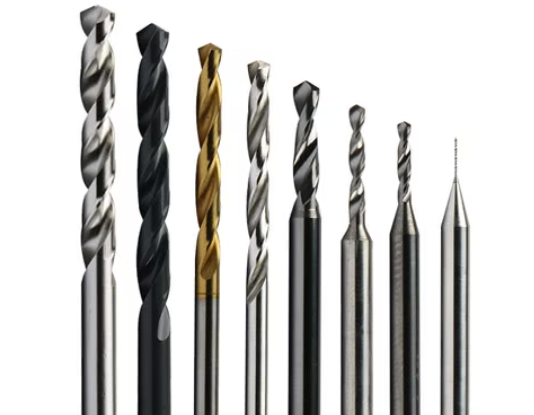The drill bit can break when it enters the workpiece and, in the worst case, it can even break inside the workpiece. We can find out in this article why this happens, how it happens and how to prevent drill bits from breaking. Different twist drill bits are designed for different applications. However, even the right quality twist drill bit can break if used incorrectly.
01 The drill bit does not match the material to be processed
The most basic process involves selecting the right drill bit for the workpiece. If you use the wrong drill bit, even if you adjust other factors as much as you want, the drill bit will still break. We have compiled a list of which tool steels are suitable for which applications.
This table only gives a rough overview. For example, some high speed steel HSS drill bits are coated and can also be used in stainless steel. In addition to the tool steel, the length of the twist drill also affects its stability. The longer the twist drill, the higher the risk of breakage. Only if you need to drill deeper into the material, use a deep hole drill.
Solution: Choose the correct drill bit for the workpiece.
02 Workpiece and drill bit are not tightened enough
If the workpiece and drill bit are not properly clamped during hole machining, additional deviation may occur, which may cause the drill bit to break.
Solution: Fix the workpiece and tighten the drill bit.
03 Poor chip evacuation
The chip flutes on the drill head are used to remove chips. The wider the groove, the better the chip evacuation effect. If the chips cannot be ejected, the bit may jam and fall. Poor chip evacuation results in additional heat generation, which can lead to annealing and ultimately drill breakage.
Solution: Use coolant and lubricant to repeatedly push the bit out of the workpiece to facilitate chip evacuation.
04Cutting speed and feed settings are incorrect
If you are using a vertical drill, make sure you choose the correct speed and feed, otherwise the drill bit may break.
Solution: Refer to the cutting speed parameter table and adjust the corresponding speed and feed.
05The quality of the drill is poor
If the twist drill bit is worn it will break, which is a manufacturing defect and could be due to poor quality steel or lack of sharpness.
Solution: Use the correct drill bit for the application.
06 Small/large diameter twist drill
Small diameter twist drills are very sensitive. You can break them with your hands.
Solution: For small diameter drill bits, be sure not to push too hard. For large diameter drill bits such as 16mm, be sure to use two or three smaller twist drill bits for pre-drilling. Drilling directly into the workpiece material places stress on the bit and can cause breakage.
Solution: Pre-drill the hole and remove the drill bit from the workpiece several times (chip removal).
07No cooling
As mentioned earlier, very high temperatures are generated during the drilling process. If you work too long without stopping to let the bit cool, thermal cracks can develop.
Solution: Use a lubricating coolant to cool and repeatedly remove the drill bit from the workpiece to remove chips.
08Use a hand drill instead of a drill press
Some drill bits are only suitable for use in drill presses because they allow maximum control of feed and cutting speed. You can also perform drill guidance.
The harder the material of the drill bit, the more fragile it is and the easier it is to break. Solid carbide drill bits are very hard and must be used with a drill press.
Solution: Choose the right drill press.
in conclusion
Twist drill bits are designed for a variety of applications. Depending on whether you are drilling a hole in structural steel or high-strength steel, you need to choose the appropriate drill bit. If you don’t do this, the bit could break.
We’ve listed eight reasons why drill bits break:
1. Using a drill bit unsuitable for the material to be processed
2. Insufficient tightening of workpiece and drill bit
3. Poor chip removal
4. Cutting speed and feed rate settings are incorrect
5. Poor drill quality
6. Small/large diameter of twist drill
7. Not enough cooling
8. Use a hand drill instead of a post drill
If you notice these issues, your drill bit should be in good condition and capable of handling long-term processing requirements.
Daguang focuses on providing solutions such as precision CNC machining services (3-axis, 4-axis, 5-axis machining), CNC milling, 3D printing and rapid prototyping services.




















